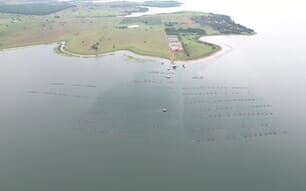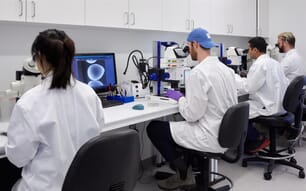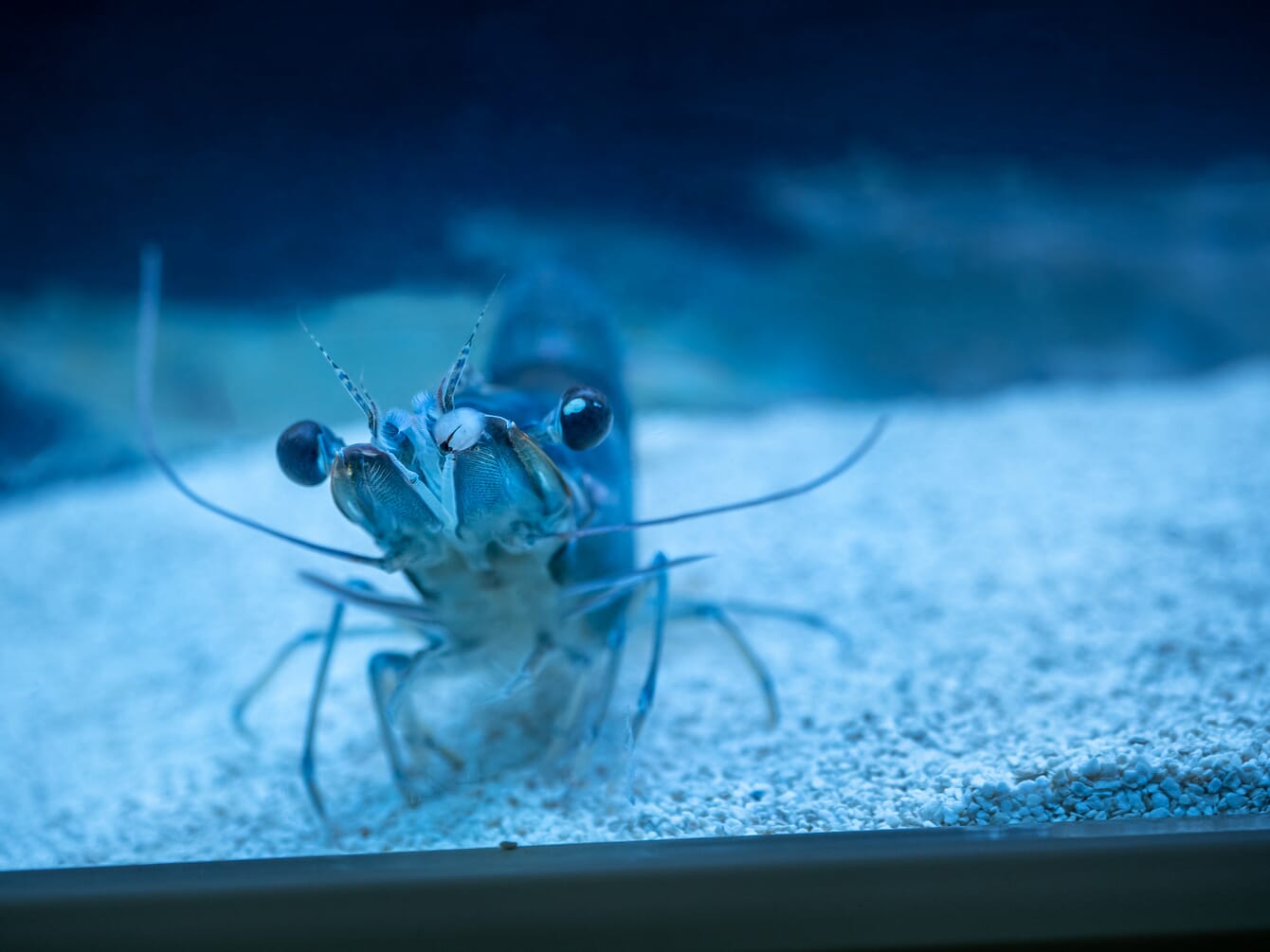
© CAT
The Fish Site spoke to Simon Hill, CAT’s chief business development officer; Alejandro Gutierrez, director of genetic services; and breeding scientist Marcos De Donato to find out more.
An industry under siege
The challenges facing the whole shrimp supply chain, as most players in the sector will be painfully aware, largely stem from the historically low shrimp prices, combined with an extended period of high feed and energy costs.
“While I think we’re starting to see an oversupply of feed, there are still going to be challenges in the market for a good number of years. Labour’s expensive, feed’s expensive and the farm gate prices are low, so shrimp farmers who want to be successful need to be smart,” notes Hill.
“Energy costs have also risen significantly in most places and there are issues with regulations too – there are more and more regulations relating to the use of antibiotics and other chemicals, which is creating problems with more diseases. So. the outlook is very pessimistic,” adds De Donato.
How breeding can help
“The most important solution to this problem is to ensure that everyone has more efficient animals – that are more resistant to disease and can grow faster using less feed,” says De Donato.
And the best way of improving efficiency, he argues, is to continue to build on the successes of key breeding programmes, which must be tailored to meet regional and seasonal challenges.
“Even though we have been working on shrimp genetics for a long time there are still a lot of areas that depend on stocks that are underselected, so I believe there’s still a lot of work to do to create better shrimp,” De Donato observes.
“Another problem is that there are many companies that sell very fast-growing PLs, but they’re usually not adapted to all the markets that they’re selling to. The shrimp might be very quick to grow but they are not always resistant to local diseases or local environmental conditions, so they often die very quickly, that’s what I’ve seen in many cases,” he adds.
Of course, genetics should not be seen as a panacea, and Hill emphasises the importance of good biosecurity, good water quality and the provision of quality nutrition in order to obtain optimal results from high quality genetics.
“With good biosecurity you’re reducing the risk of a catastrophic crop failure and might be able to limit any outbreaks to a single pond or cut it out completely,” he reflects.
“And the farmers who are going to survive are those who recognise the values of using good husbandry techniques and good genetics. In this context, the only strategy that falls short is inactivity,” he adds.
CAT’s track record
CAT supports genetic improvement for shrimp in LATAM – where they are one of the main genetic service providers in Ecuador – as well as in Asia and North America, and offers genotyping as well as genomic selection services, with a team of breeding scientists and genomics experts providing breeding programme support services.
“We manage breeding programmes, provide genetic services and analyses, and additionally, we offer genotyping services which provides data back to the client or back to our breeding and genomics teams to analyze and then pass on the results to the client,” Gutierrez explains.
“We have the breeding, the genotyping and the analysis all in-house. We can develop custom SNP panels tailored to a specific client for high-, medium- and low-density genotyping, genetic analysis and breeding support. I don’t think any other company has that, or if they do then they’re not as proven as a combined service as we are in the market. Our strength is our ability to work with each unique customer and tailor a programme and tools that meets their operations, facilities, and resources,” adds Hill.
“Our involvement has been increasing since we developed a high-density panel for shrimp genotyping in 2019,” notes Hill.
‘‘For the development of the HD panel our team collaborated with clients to build a versatile genetic tool, by integrating data from more than 20 shrimp populations from Asia, Australia, North and South America – all over the world, really. Additionally, we have in-house LD [low density] panels that offer similar versatility. We've engineered these panels for global applicability, ensuring users worldwide can achieve precise genetic analysis with a high degree of success,’’ adds Guttierez.
CAT has been involved in the shrimp sector for 12 years and is currently stepping up their focus, having recently developed new tools for the job. They are releasing genomic panels for monodon.
“Monodon is undertaking somewhat of a resurgence and is becoming increasingly important in some areas where disease has been causing problems in vannamei. There’s a lot of interest in our monodon tool and we expect that the market for breeding and producing monodon will continue to increase,” Hill concludes.
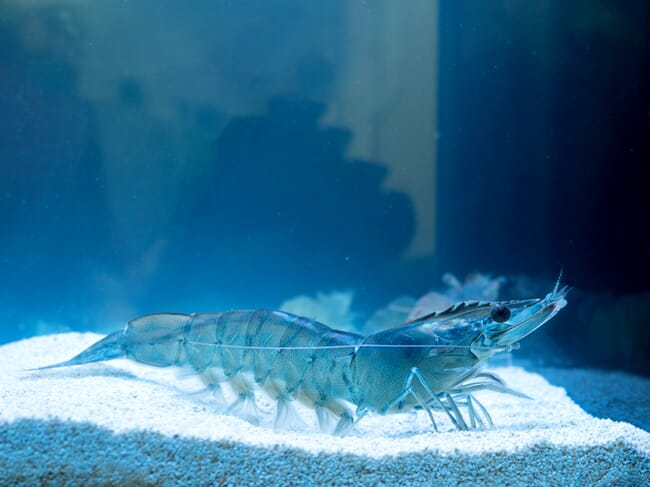
© CAT
Traits in demand
As the challenges facing the shrimp sector have changed, so have the preferences of both breeders and growers. While growth tends to be the number one trait required, others have emerged more recently.
“Growth has been very easy to select for, so now I think the most important are resistance to the new diseases that are appearing, and the other is adaptation to local conditions for better performance and survival. For example, if you take animals that are pathogen-free into challenging environments, like Ecuador, where they will be exposed to different pathogens, then they may not perform as expected. Likewise, animals that perform well in environments inland with low salt water perform very differently in the conditions on the coast with full salinity,” De Donato reflects.
“A lot of clients are realising that the basic mass selection techniques that they are doing can be improved by the use of genetic markers and genomic information to limit inbreeding, and now they are now enquiring about the use SNP genotyping panels. We’ve seen a huge increase in interest from companies with broodstock who want to include these tools in their breeding programmes and it’s been our job to show them the benefits of using these tools so they can see the return on their investment in the short-to-medium term,” adds Gutierrez.
The ability of breeding programmes to have an impact on diseases is perhaps most graphically illustrated by the virtual elimination of Taura syndrome virus since it first emerged, as De Donato points out.
“It was a big problem 20 years ago but now it’s nonexistent because selection programmes have meant that most shrimp stocks are now resistant to it. It’s a clear example of the power of good breeding practices and using technology,” he says.
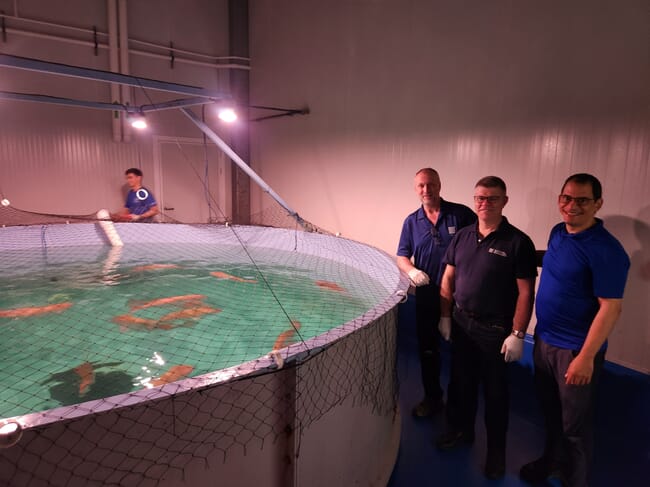
© CAT
More recently, according to De Donato, whitespot and AHPND/EMS continue to create major health challenges but are proving harder to eradicate.
“Now we can do it faster, but we face more challenging pathogens. Whitespot disease is very difficult for shrimp to become resistant to: their survival has increased, but we can’t say that they are 100 percent resistant to it, because there are also environmental factors affecting how the virus attacks,” he notes.
Meanwhile EHP is also proving problematic – more for reducing growth rates than for causing direct mortalities.
“The shrimp keep eating, but don’t grow, so that’s probably the worst problem that you can have. And when combined with other bacteria it can lead to white faeces disease,” he says.
In terms of emerging diseases, he points to several which are more regionally localised but with the potential to spread worldwide, such as decapod iridescent virus 1 (DIV1), Penaeus vannamei nodavirus (PvNV) and Vibrio parahaemolyticus-related translucent post-larvae disease (VTPD).
How CAT can help
“We meet with interested breeders to understand what their shrimp population looks like and what their needs and goals are. We can either provide a genetic overview of their population’s genetic variation, and then we can jump into more specific management or services that would allow them to select for a specific animal that has the best genetics for them to use,” says Gutierrez.
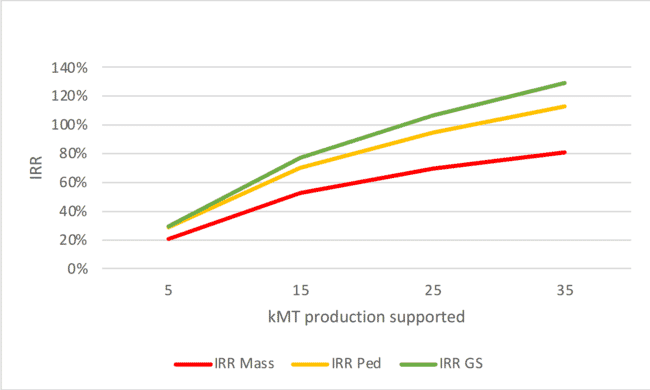
On the Y-axis, the Internal Rate of Return (IRR) percentages range from 0% to over 100%. On the X-axis, the production supported is marked in kilo metric tonnes (kMT), with values at 5, 15, 25, and 35 kMT. The red line represents IRR for Mass selection (IRR Mass).The green line represents IRR for Pedigree-based selection (IRR Ped).The yellow line represents IRR for Genomic selection (IRR GS).
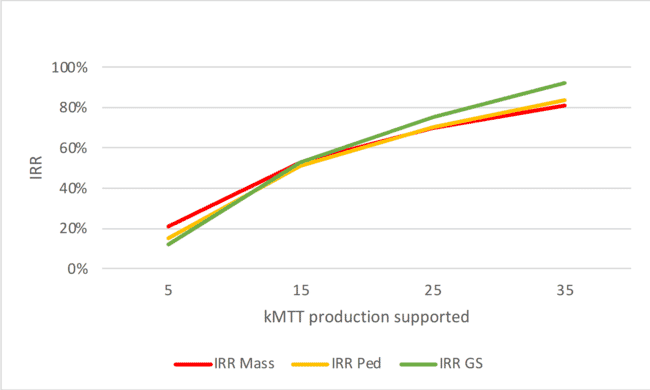
On the Y-axis, the Internal Rate of Return (IRR) percentages range from 0% to over 100%. On the X-axis, the production supported is marked in kilo metric tons (kMT), with values at 5, 15, 25, and 35 kMT. The red line represents IRR for Mass selection (IRR Mass). The green line represents IRR for Pedigree-based selection (IRR Ped). The yellow line represents IRR for Genomic selection (IRR GS).
“The low-density panel helps us identify families, for example, so we can tell them which animals can be crossed without the risk of increasing inbreeding. On the other hand, the HD panel contains thousands of markers that can be used to screen the whole genome of the animal and give us and the breeder better and more accurate breeding values that will increase the return on selection in more sophisticated breeding programs,” he adds.
Using the HD panel requires more investment from their customers, but in the medium term the return on investment will be much higher, according to Gutierrez.
The level of service depends on the needs and capacities of the clients.
“Some of our clients have in-house geneticists, in which case we provide all the information, analysis and genotyping and they make most of the decisions, but we also have clients that we help with breeding strategy in terms of selecting the tools and approach that will add the most value to their operations, needs, and their budgets,” De Donato notes.
In terms of the impact CAT can have, Hill points out that it is rarely uniform, but always positive.
“It depends on how good a client’s programme is in the first place: if they are well-organised then we can perhaps increase yields by a further 5-6 percent per generation, adding significant value to an already high quality breeding programme. But if their broodstock aren’t performing well and they don’t have high diversity, the gains from using genomic selection can be much higher, as we can help to introduce more diversity into the programme and also select the animals that are performing the best. In such cases a greater than 10 percent improvement in yields per generation would not be unrealistic at all,” he reflects.
Looking ahead
CAT are currently building their expertise in genome editing technology in their research lab in San Diego, as they see it as having huge potential in shrimp in the not-too-distant future, with the capacity to make significant step changes in shrimp yields in a short space of time
“It’s going to be a major contributor to making the industry more profitable,” Hill predicts.

